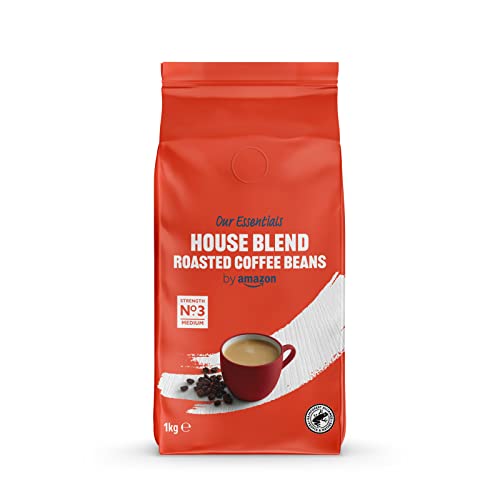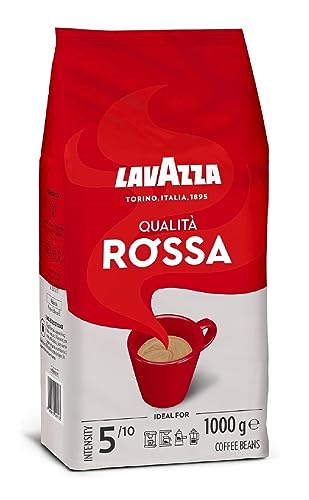The 10 Scariest Things About Espresso Coffee Beans 1kg
페이지 정보
작성자 Eleanor 작성일 24-09-26 11:24 조회 42회 댓글 0건본문
 espresso coffee beans 1kg (find out here)
espresso coffee beans 1kg (find out here)A great espresso requires a blend of beans that are suited to the style of drink. While normal light or middle roasted beans are also used to make espresso, the flavor may not be appropriate.
 The finest espresso beans are smooth and nuanced with rich crema. They also have less caffeine than drip-style coffee.
The finest espresso beans are smooth and nuanced with rich crema. They also have less caffeine than drip-style coffee.Origin
The origins of espresso coffee beans is a fascinating story. According to legend that a 9th century Ethiopian Goat-herder named Kaldi found the first coffee plant among his goats and observed its unique energizing effect on his goats. He began feeding his livestock the fruits of the Coffea plant, and they became stronger and healthier as well as more active. This was the beginning of a fantastic drink, one that is now consumed by people around the world.
The brew that we know as espresso is made by forcing hot water under pressure through a bed of finely crushed coffee beans. The resulting brew is rich in flavor and extremely concentrated, with a layer smooth, tight bubbles known as the crema. This is the hallmark of a great espresso and has spawned an entire culture around the beverage.
Espresso isn't just a popular drink in cafes but it can also be prepared at home. By purchasing the appropriate equipment and roasting your own beans will allow you make the perfect cup every time. It can take a little longer than buying coffee bean 1kg from the store, but the quality and flavor are worth it.
It is essential to choose the best coffee beans for your espresso to ensure a smooth and delicious brew. Many people use regular coffee to make espresso. This is not recommended as they are roasted and ground differently, resulting in a weak or bitter brew.
We offer espresso coffee beans in 1kg coffee beans uk bags that are ground and roasted specifically for espresso brewing. You will enjoy an excellent cup of coffee each time. We only purchase Arabica and Robusta coffee beans from farms that are committed to sustainable agriculture and high ethical standards. We offer this unique coffee from the Colombian region of Huila that is known for its fertile valleys and snow-capped volcanoes which have enhanced the soil with minerals over time.
Roast
The roasting process is what transforms raw, green beans into the coffee 1kg we drink. It's also what gives coffee its taste color, aroma and colour. The roasting process requires a great deal of skill and experience to regulate the temperature so that the beans do not burn or become bitter.
During the roasting process the beans lose a bit of moisture and expand by as much as five percent. The beans also begin to release carbon dioxide which causes them expand and crack. This is known as the 1st Crack. The first crack is the moment when sugars begin to caramelize, the bound water begins to escape and the structure of the bean breaks down allowing oils to migrate from their tiny pockets in the seed. This is a crucial stage during roasting, and if you rush it the coffee will be damaged.
A well-roasted, full-bodied coffee will have an even and smooth profile. It will have a mild sourness and a strong aftertaste, while keeping the original flavor of the bean. This is achieved by roasting beans until they have medium brown and have lost the majority of their moisture.
After the seeds are roasted, it is important to cool them as quickly as you can to prevent them from burning. This will release more carbon dioxide. The final outcome will depend on the speed of roasting and how quickly they cool.
Espresso coffee is typically blended. While single origin beans are suitable for brewing techniques however, the intense flavors of espresso require a mix of various bean types.
It is recommended to buy a high-end espresso machine to brew the best cup of espresso. The top espresso machines come with a separate tank for espresso and a boiler with a higher capacity that enables quicker heating. To maximize the extraction quality ensure that the water tank is filled with cold, fresh water.
Dose and Yield
One gram of ground coffee is used to create one shot of espresso. The ratio of espresso liquid to ground coffee has to be less than or equal to 1:2. The exact ratio depends on the density of the beans. Certain coffees are heavier than other when they are ground to the same size. This is why a precision scale can be extremely useful!
The temperature of the brew will also determine how you utilize your coffee beans. The ideal range is between 205-205 degrees Fahrenheit to 195 degrees. This is because the flavour compounds in your beans are best extracted in this range. A temperature that is higher or lower could affect the texture, flavor and the thickness of the crema and also the consistency and amount of extraction.
There is always the choice between extracting your coffee to the highest strength and having a rich taste. The more you extract, the stronger your coffee will be. However, this also increases the chance of bitterness and acidity. You may be tempted to make up for this by using recipes with an excellent yield. However, as you increase the multiplier, you also increase the amount of water that flows through the grinds. This is crucial and could result in more flavor being lost.
Dose is the most flexible lever of control, however there are many other factors that play a part in the intensity of your espresso. The ratio is the primary element, as is the accuracy of your grinder as well as the size and speed of your portafilter as well as the speed at which you take your shot.
A higher ratio (less than 1:2) will produce an intense, balanced espresso that has a delicious mouthfeel. On the contrary, a smaller ratio will yield a more intense but less balanced espresso. Finding the right balance is key. You can achieve this by playing around with the dose and changing the ratio according to the intensity you prefer and the flavor payoff.
Brewing
Espresso beans are roasted finer than regular coffee beans and brewed at more pressure. This produces a stronger, more concentrated shot of coffee with more intense aromas and flavors. Espresso is used to make lattes, cappuccinos and other drinks made from coffee that are usually made from milk. Espresso can be used in baking or as a garnish for desserts made with coffee or chocolate.
Espresso coffee can be made with various methods of brewing, including Turkish coffee, French press, cold drip, and brew. The type of brewing method you choose depends on your individual preferences and the equipment for brewing coffee you have at your disposal. You can find the perfect espresso by experimenting with different brewing methods and ingredients.
Espresso beans can be used for other coffee drinks but they are best used for drinks that are espresso-based. Espresso beans are roasted for longer generally past the second crack. This gives them more dark, toasted and more intense flavor. In addition espresso beans are usually roasting with higher levels volatile compounds such as chlorogenic acids 4 and trigonelline 2, which contribute to the body, bitterness and flavor of espresso.
While it is technically possible but the results may not be as pleasing. This is because espresso beans are roasted in order to produce specific tasting notes such as fruity or chocolaty, which is difficult to duplicate using other roasts.
When making espresso, the main goal is to achieve a good crema. This is a dense and thick layer of coffee foam that rises to the surface of the coffee as it is extracted under a high pressure. A great crema indicates that you have incorporated all the basic inputs from your coffee beans grinder, grinder, resistance in the coffee bed, and the temperature of the water to create an excellent espresso.
The quality of the coffee beans is crucial to achieving a great, creamy crema. The best espresso beans are those that have been roast at a medium to dark roast and ground as finely as possible. Freshness is also important, as whole beans retain their flavor and taste for longer than pre-ground varieties. It is also important to keep your beans in a sealed container away from heat and moisture.